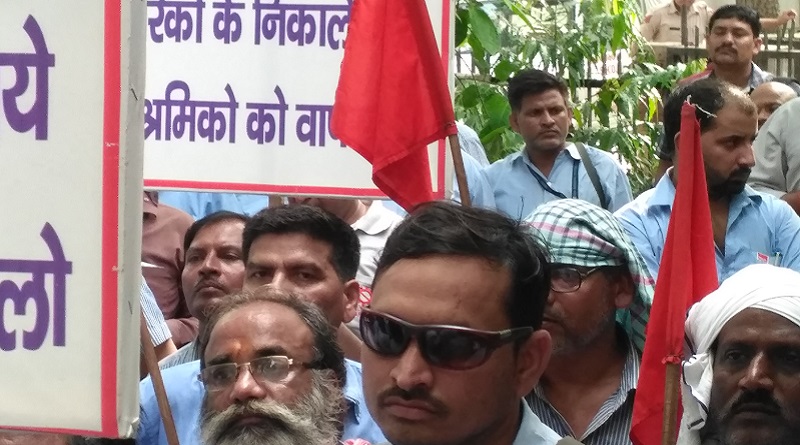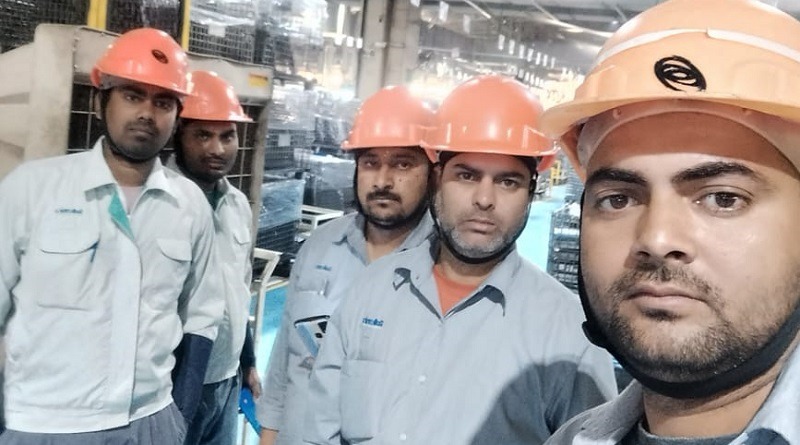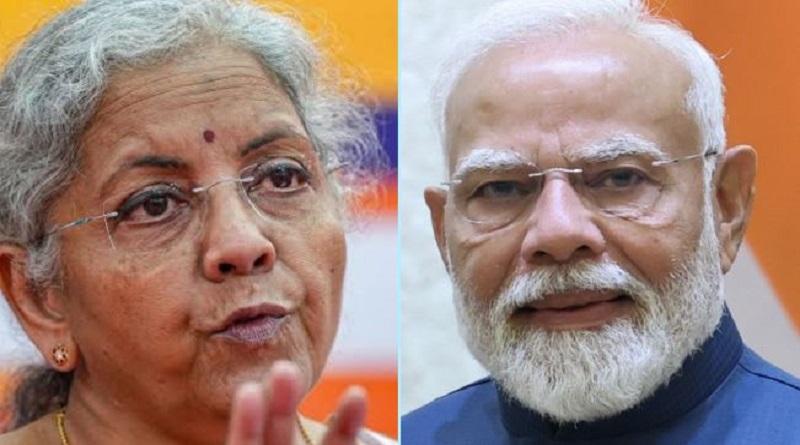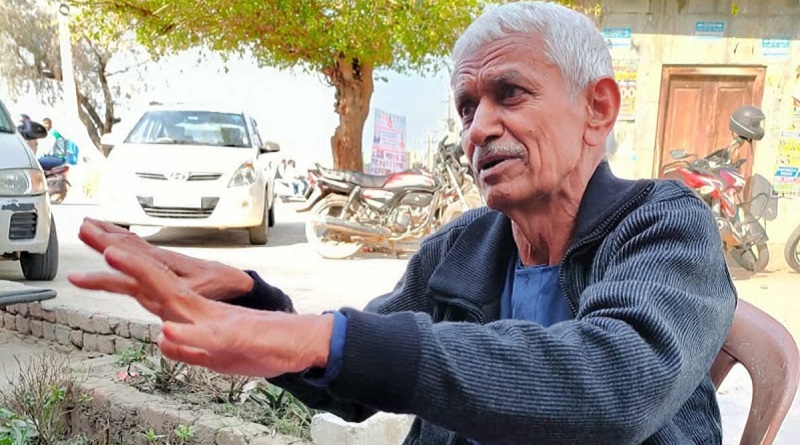Class Character of a Hindu Rashtra- An analysis

By Dr. Pradeep Kumar
The question arises, what should political education consist in? Can it be confined to the propaganda of working-class hostility to the autocracy? Of course not. It is not enough to explain to the workers that they are politically oppressed (any more than it is to explain to them that their interests are antagonistic to the interests of the employers). Agitation must be conducted with regard to every concrete example of this oppression.
Inasmuch as this oppression affects the most diverse classes of society, inasmuch as it manifests itself in the most varied spheres of life and activity — vocational, civic, personal, family, religious, scientific, etc., etc. — is it not evident that we shall not be fulfilling our task of developing the political consciousness of the workers if we do not undertake the organisation of the political exposure of the autocracy in all its aspects? In order to carry on agitation round concrete instances of oppression, these instances must be exposed. -Lenin
Since the advent of capitalism, the bourgeoisie has always had access to an array of cultural, historical and ideological arsenal at its disposal. Using hegemony as well as coercion, they try to use this arsenal to divide the working class into a multitude of social groups. If the bourgeoisie and the capitalist state can convince workers at large that their social identity as part of one or the other social group is more relevant over their identity as a worker, then in the class conflict that may arise, the worker may win some battles but (unless these ideological weapons of the capitalists are destroyed) the war towards emancipation is heavily tipped in the favor of the oppressors.
Indian capitalists have been even more fortunate as historical development of the Indian society has given them several such arsenals which are always available at their disposal. One of the biggest such weapon is dividing workers into their castes. From the contractors to small factory owners and multinational corporations, use of caste to divide the workers or subdue their militancy is a constant tactic employed by the Indian ruling class.
On top of the caste hierarchies, Indian bourgeoisie always have had access to the reserve army of migrant labor. India, as a home to many nationalities and languages and culture, generates its own intrastate migrants. These are workers who on one hand are citizens with easy availability for exploitation and on the other hand are “foreign nationals” whose rights, demands and even lives can be ignored by the factory owners at their own peril. Since the earliest Jutt mills were established in Calcutta, migrant workers have always been the most exploited strata of workers in India.
Not always part of the labor force in their own native states, they arrive in different states with different language, culture and sense of alienation from the local population. For a migrant worker then, identity as a worker is often not organic, as they are workers only for part of the year and are peasants (seldom with none to very little land) and rural folk for the rest of the year. Their social integration even at the place of urban work is related to their ethnic and caste identity. So when marginal or landless peasants and their children from the north migrate to the industrial hubs of Maharashtra, Karnataka or Tamil Nadu, their identity as a worker is subsumed under their regional and caste identities as the camaraderie develops along these lines.
These cultural and historical divides are complimented by the different categories invented by the ruling class such as permanent, contractual and temporary workers. This divide is as real as the wage gap between permanent and contract workers.
However, history teaches us that a militant working class movement, which also acts as a training school for political education of workers and everyone around them, has often shown us glimpses of how such divide and rule tactics of the capitalists can be countered by the politics of the proletariat. In the Early 60s, the Dodge Revolutionary Union Movement (DRUM) in Detroit, USA was a union of African American workers who organized Arab and Asian contract workers in their union. Jat workers of Maruti-Suzuki rose in protest when Jiyalal, a contract worker, was humiliated and slapped by a supervisor in the factory belonging to the upper caste (Jiyalal was a dalit).
All over the world, from shores of Taiwan (where migrant fishermen from Indonesia are being organized by left Unions) to the factories of southern Italy, we are seeing the radical strata of trade union movement trying to organize the marginalized workers from minority communities, migrant workers, temporary workers and so on. In India, the deepening divide between permanent and contract workers in a factory or a loss of identity of an informal worker (beyond the identity of someone being exploited), has already thrown the trade union movement into a serious crisis. However, even in such precarious times, we see certain sporadic but genuine attempts emerging within the communist movement to organize informal workers in gigg economy or organizing contract workers in the industrial areas or service sector.
But another specter is haunting the already fractured working class movement all over India. A new reactionary wave is on the rise which has a potential to completely and irreversibly sweep the working class politics in our country. And this is the wave of Hindutva, an assertion to fight to establishment of Hindu Rashtra.
The spread of Hindutva is not a maneuver of a capitalist or a contractor for some immediate leverage. Neither does a hindu worker directly benefit from hindutva as there are simply not enough Muslims in the labor force whose jobs are up for grabs. It is the most reactionary and vile variety of a national project taken up by Sangh Parivar and is done through a myriad of reactionary organizations and forces ranging from BJP to Bajrang Dal and their union Bhartiya Mazdoor Sangh (BMS). BMS for example, asserts the sanctity of a worker as he is a hindu and contributes to the nation building project. This bland of religious nationalism tied to the identity of the worker is now a primary weapon fascist rulers have, to ensure that their exploitation of workers and the peasantry can go hand in hand with their exploitation and annihilation of a minority ethnic groups and especially Muslims. And in this the consent of the Hindu workers is sought either explicitly (as many of the workers who belong to groups like bajrang dal participate in the riots and genocides) or implicitly through electoral machinations.
And here in lies the rub. As comrades from anti-zionist group Matzpen, Moshe machover and Akiva Orr articulated exactly Five decades ago, in any class based society, there will always be internal conflicts between the working class and the capitalists. However, once an identity, such as a “Hindu worker” emerges and becomes sacrosanct for the workers, then in the final scheme of things, the toiling masses always trail behind the ruling class as everybody is “unified” under the common religious identity. History informs us that such an identity (be it religious or nationalist) becomes more easily entrenched if it is based on the othering of a particular ethnic or minority community, which in the present case is primarily the Muslim community.
The latest data shows that the share of Muslims in labor participation rate has fallen to an all-time low, as only around 33 percent of Muslims actively look for work. Their share in public sector jobs is declined to around 7 percent, even though Muslims constitute close to 15 percent of the population. Muslims are mostly self-employed or unemployed. The eradication of communal sentiment that would simply happen as toiling masses from different religions and caste are oppressed on the same assembly line are long past. Laboring masses from the Muslim population simply do not roam the shop floors where workers of a factory unite.
This clearly implies that the fight against Islamophobia is unlikely to emerge as a natural corollary of the fight against capitalism based on economic demands. They will require the will of communist organizations and trade unions to politicize and organize the workers against the Hindutva and reclaim their politics. Beyond the lip service that is often paid by the left unions against communalism, we see no serious evidence of any attempt by which workers are educated about the totality of class consciousness : A principled stand against all forms of oppression in a society and more so against the forms of oppression which are primary weapons that fascists in power use.
Attempts to tie communal pogroms to economic demands of workers is the worst variety of revisionism, and in fact seriously undermines the serious dangers of communalism by trivializing it. Historical lessons from the working class victories have taught us that workers should not oppose construction of a temple in Babri simply because the same money can be used for providing subsidized education, but should oppose it precisely because it is built on death and destruction wrought upon a minority community. Marx once said (not as a moral judgement but as a political prophecy) that “people oppressing others can never be free”, and it is clear that these basic ethos is no longer central to the left wing trade unions which function today. Even among the unions, whose very formation has involved protracted struggles and tremendous sacrifices by the workers, turn into a bastion of permanent workers and eventually become blind to the reactionary education of the workers by the ruling class and its media.
As trade unions struggle for their very existence, their approach to workers takes increasingly populist forms as they offer themselves as the most viable mediators through which the immediate demands of workers can be met. Thus, the primacy of anti-fascist propaganda often takes a backseat. A genuine belief that only the working class and peasantry which when organized politically and ideologically can challenge the hegemony of RSS, the largest fascist organization the world has ever seen, appears completely absent in the aspirations of the organised working class movement.
We have seen this in Gurgaon Manesar, where the stoppage of Namaaz by goons of VHP went completely unopposed, even though gurgaon manesar belt is home to some of the most militant unions. And if even after decades of strong working class movement, workers by and large support or are neutral towards terrorist activities of the affiliates inside Sangh Parivar (such as Bajrang Dal), then one wonders what does politicizing a worker mean in even some of the most radical unions in India today.
We are witnessing a panorama of unfolding tragedies in the Indian working class movement. Many shades of this tragedy are borne out by a criminal neglect wherein unions are no longer political training schools of workers but simply bargaining intermediaries. So long as the trade union movement divorces itself from the proletarian politics in the name of “real demands of the workers”, it will be trapped in a vicious cycle of combatting capitalism on the turf laid down by the fascists, where they hold the trump card of Hindu identity of a worker.
What will be the class character of such a Hindu Rashtra? We are already witnessing its emergence : Any discontent a worker may have against his or her employer or even policies of the state is increasingly seen simply as a “injustice” or an internal struggle within the contours of a Hindu Rashtra, a capitalist fascist state, Then the task of working class politics centers around fighting for better bargaining rights of workers and more broadly, rights of the working class to demand welfare measures from the state. However, all of these class conflicts can happen well within the contours of a Hindu Rashtra where on one hand the Muslim population in India will be ghettoized while it is being turned into second class citizens and on the other hand a settler colonial project in Kashmir will rip the Kashmiri Muslims off their lands and livelihoods. A tiny fraction from such a land-grab may even subsidize some Hindu working population in Jammu and Kashmir via direct transfers or housing schemes. Israel already offers a model of such exclusively Jewish settlements built on lands stolen from the Palestinians and if recent history is any indicator, RSS/BJP government will not flinch twice in adopting such a measure. It is only a matter of time.
Hence, the question is, how much urgency and priority should the communist movement and the working class movement specifically give to fighting against the emerging identity of a “hindu first” worker. As we are seeing in recent years, Hindutva has shown an ability to even overcome caste divisions when it comes to perpetrating genocide against Muslims. A significant class of OBC population of the working age and a section of Dalit and tribal youth has (thanks to decades of effort by cultural and educational initiatives of RSS and VHP) developed strong Islamophobic prejudices. The workers from various castes (including the most oppressed castes) are increasingly identifying with their Hindu (which stands in opposition to Muslims) identity. With abrogation of 370 and colonization of Kashmir and marginalization of Muslim population elsewhere, we are duplicating the Israel model on a mass scale and just as in Israel, where working class trails behind the ruling class under the banner of Zionism, we are witnessing a similar destruction of India’s glorious working class traditions under the banner of Hindutva.
The fact that workers are being educated by the most reactionary propaganda and duped into identifying first as a Hindu and only then as a worker is a challenge that may alter the dynamics of India’s trade union movement forever, just as it has done in Israel. Akiva Orr’s prophetic words on serious impediments to the revolutionary role played by the proletariat echo loudly in India today.
As the transformation towards a Hindu Rashtra becomes a constitutional reality, the revisionists have already shown us their chosen path : Bureaucratic trade unions with sizable membership, ritual national strikes and restricting the militancy and demands of workers inside the contour that the state and judiciary allows. However, the revolutionaries entrenched in the working class movement stand at a precipice : They will have to decide if their movement stands for a protracted struggle against the establishment of a capitalist Hindu Rashtra or if it stands for a fight of workers rights inside the Hindu Rashtra.
“No working class can play a revolutionary role in society while the majority of its members desire to improve their situation individually, within the framework of the existing society, by leaving the ranks of their class. This truth is reinforced when the proletariat does not recognize itself as a stable social class with its own group interests and its own value system in conflict with those of the existing social order…..This does not mean that the Israeli working class cannot become a revolutionary force in the future- it merely implies that today, political activity inside this class cannot proceed from the same assumptions and expectations as apply in a classic capitalist country.”- Moshe Machover and Akiva Orr (Class Character of Israel)
Do read also:-
- Labour in ‘Amrit Kaal’ : A reality check
- Discovering the truth about Demonetisation, edited and censored, or buried deep?
(Writer is a research scholar.)
Subscribe to support Workers Unity – Click Here
(Workers can follow Unity’s Facebook, Twitter and YouTube. Click here to subscribe to the Telegram channel. Download the app for easy and direct reading on mobile.)



